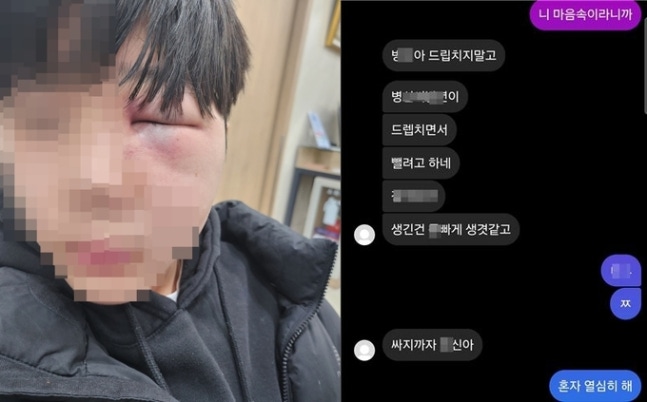Victim’s Side: “Just Changing Classes… Mandatory Transfer Needed”

In Asan, Chungcheongnam-do, a student suffered retinal damage due to assault, and the perpetrator was separated into a different class as a punitive measure. However, secondary abuse continues to occur, sparking controversy.
According to Yonhap News on the 26th, middle school 1st-year student A (13) was subjected to school violence at a private residence in Asan after school hours on March 7. Surrounded by 5 classmates, A was physically assaulted by B (13), a classmate. B repeatedly punched A in the left eye and face while on top of A. As a result, A’s left eye suffered retinal damage, putting them at risk of blindness and requiring a four-week diagnosis.
According to A’s side, since moving to Asan in November last year, A had been continuously receiving threats mixed with insults through social networking services (SNS) from B, with whom they had no prior acquaintance. B continued to threaten A with messages like “I’ll beat you up at the graduation ceremony”, “Where do you live?”, “Let’s fight.”
Coincidentally, both students were assigned to the same middle school and class. Subsequently, B began to harass A even more openly, and a school violence incident occurred within a week of A’s enrollment. The school violence review committee decided to change B’s class as a disciplinary measure one step below mandatory transfer and issued a written apology requirement to A for acting in self-defense.
B was moved to a class next to A’s, and A essentially continued to encounter B at school, leading to ongoing secondary abuse.
A’s mother lamented, saying, “The perpetrator student provokes my child by coming to their class, swearing, and even hitting their shoulder whenever passing by, perpetrating secondary abusive actions daily. My child is still undergoing psychological treatment, suffering in pain, but having to face the perpetrator student without any sense of guilt or reflection is the harsh reality.”
A’s side urged for the mandatory transfer of the perpetrator and pointed out issues with the school violence review committee system, criticizing instances where the committee was not adequately informed about the violence incidents before review, leading to inappropriate questions being asked during deliberations and inaccuracies in meeting minutes regarding the refusal of an apology from the perpetrator’s parents.
Asan Education Office stated that they cannot interfere with disciplinary decisions made based on the committee’s judgment but can raise objections through administrative procedures. They also mentioned the need for stricter guidance by the school to ensure that the perpetrator student complies with the access restriction order.

